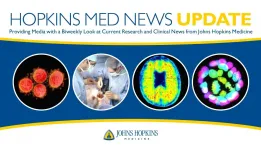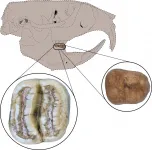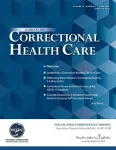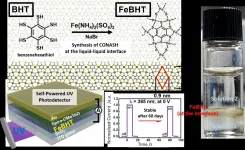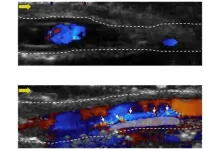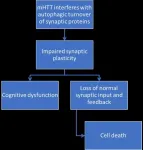Media Contact: Patrick Smith, pjsmith88@jhmi.edu
Johns Hopkins Medicine gastroenterologist Gerard Mullin, M.D., and a team of co-authors published an article May 11, 2021, in Advances in Experimental Medicine and Biology that details the scientific rationale and possible benefits -- as well as possible drawbacks -- of several dietary supplements currently in clinical trials related to COVID-19 treatment.
According to business analysts, the U.S. nutritional supplement industry grew as much as 14.5% in 2020, due in large part to the COVID-19 pandemic.
Mullin, associate professor of medicine at the Johns Hopkins University School of Medicine, and his colleagues shine a light on melatonin, vitamin C, vitamin D, zinc and several plant-based compounds, such as green tea and curcumin. For instance, the authors explain that ascorbic acid -- also known as vitamin C -- "contributes to immune defense by supporting cell functions of both the innate and adaptive immune systems."
In the journal article, they discuss the mechanics of how each of the supplements works and how each might benefit a patient fighting COVID-19.
Zinc, they write, has been shown "to inhibit coronavirus RNA replication." They also note that, when administered at symptom onset, zinc "can reduce the duration of symptoms from illness attributed to more innocuous coronavirus infections, such as the common cold."
Finally, Mullin and his colleagues provide short explanations of the clinical trials underway to test each supplement's effectiveness in fighting COVID-19.
For example, Mullin says that, "to date, there are abundant data associating low vitamin D status to higher vulnerability to COVID-19 and poor clinical outcomes."
The authors caution that "any benefit of dietary supplements against COVID-19 depends on results of randomized controlled trials" and peer-reviewed literature.
Mullin is available for interviews.
JOHNS HOPKINS MEDICINE HELPS DEVELOP PHYSICIAN TRAINING TO PREVENT GUN INJURIES, DEATHS
Media Contact: Kim Polyniak, M.A., kpolyni1@jhmi.edu
Each year, nearly 40,000 people in the United States die because of guns, making firearm-related injuries a leading cause of death for adults and children. According to a recent report, gun violence surged during the COVID-19 pandemic, making 2020 one of the nation's deadliest years for firearm-related casualties on record. Health care professionals could help reduce the toll, but only about 20% receive any education on firearm injuries or their prevention. To help change that, Johns Hopkins Medicine experts and collaborators across the United States established a national consensus guideline on educational priorities regarding firearm injury prevention for health care professionals.
The guideline appeared July 6, 2021, in the journal Academic Medicine.
"In many cases, physicians haven't felt comfortable talking about firearms with patients because it's been viewed as a divisive subject," says Katherine Hoops, M.D., M.P.H., assistant professor of anesthesiology and critical care medicine at the Johns Hopkins University School of Medicine.
"We set out to change that by being the first to create standards for undergraduate, graduate and continuing medical education, so clinicians and educators have a foundation from which they can develop educational programming for their learners," says Hoops, who cares for patients -- including those with gun-related injuries -- in the pediatric intensive care unit at Johns Hopkins Children's Center.
In April 2019, Hoops and Jahan Fahimi, M.D., M.P.H., an associate professor of emergency medicine at the University of California, San Francisco, convened a diverse group of more than 30 subject matter experts in medicine, nursing and public health from academic institutions across the United States to create a comprehensive and adaptable framework for firearm injury education.
The group outlined six categories previously identified in medical research as priorities. These include a general category with priorities applicable to all types of gun-related injuries and five specific categories focused on intimate partner violence, peer violence, mass violence, suicide and unintentional injury.
According to the researchers, training based on the new standards should enable clinicians to describe fatal and nonfatal firearm injury epidemiology; understand firearm access, possession, ownership, transfer and use; and be familiar with basic types of firearms and ammunition. They also should be able to provide counseling about firearm injury prevention -- such as safe gun storage -- to their patients.
Regarding suicide and suicide prevention, the researchers say clinicians should be able to describe the epidemiology of suicide and suicide attempts relating to firearm injury and death, as well as have the ability to assess patient suicide risk and understand how to escalate concerns for patients who may be at risk.
The published paper includes more guidelines and can serve as a resource for educators in health care professional schools.
"We hope that this educational framework will fundamentally change how physicians talk about violence in their practices," Fahimi says. "It's engaging with patients, talking about their experiences, helping them understand the risk of injury, and ultimately preventing injuries and saving lives."
Along with Hoops and Fahimi, Megan Ranney, M.D., M.P.H., of Brown University was a key researcher on this project.
Hoops is available for interviews.
COVID-19 NEWS: STUDY SAYS PANDEMIC IMPAIRED REPORTING OF INFECTIOUS DISEASES
Media Contact: Michael E. Newman, mnewma25@jhmi.edu
With the health care community heavily focused on COVID-19 since the first quarter of 2020, there have been concerns that reporting of other infectious diseases -- and the resulting data that enables them to be more effectively treated and controlled -- may have been impacted.
Researchers at Johns Hopkins Medicine and the University of Southern California analyzed the number of reported cases of 42 infectious diseases at the state and national levels between March 2020 and March 2021, compared with those recorded over the previous five years. Their findings were reported online June 7, 2021, in the journal Clinical Infectious Diseases.
The researchers looked for reporting differences by geographic location and by five routes of transmission: sexual, foodborne/waterborne, vectorborne (such as mosquito transmission), injection drug-use associated and respiratory.
Among the study's highlights was a nationwide 82% drop in the number of cases of mumps reported in 2020, compared with the previous year. Between the same dates, the number of reported cases of chlamydia in the United States fell almost 15%, from 1.57 million to 1.34 million.
"We found substantial differences in the reporting of diseases between 2019 and 2020 by route of transmission, with the greatest relative decrease -- nearly 51% -- seen for respiratory diseases," says Matthew Crane, a medical student at the Johns Hopkins University School of Medicine and the study's lead author. "There also were significant decreases for drug use-associated diseases [47%], vector-borne diseases [44%] and foodborne/waterborne diseases [40%]."
Regarding reporting variation by geographic location, Crane says he and his colleagues found decreases of 50% or greater in 2020 relative to 2019 in five states: Hawaii (75%), Kentucky (66%), Nebraska (65%), Missouri (59%) and North Dakota (55%). Five other states had decreases between 40% and 49%, three states were between 30% and 39%, and seven states were between 20% and 29%. There were decreases in reporting of infectious diseases in 34 states during the pandemic compared with the 2015-2019 period.
"Overall, we found decreased reporting of almost all nationally notifiable infectious diseases and conditions during the COVID-19 pandemic," Crane says. "These decreases were found nationwide and at the state level, and appeared in all of the disease transmission routes we studied."
Crane says it's unknown whether the observed decreases indicate true reductions in infectious disease cases or an impairment of typical disease reporting during the pandemic.
"We believe that both factors likely contributed to our findings," he says.
Based on these findings -- and similar results in an earlier study looking at pandemic-driven reporting variations for sexually transmitted infections -- the researchers feel there is a critical need for more investment in disease surveillance in order to understand whether infectious disease transmission may have been underreported during the COVID-19 pandemic.
Crane is available for interviews.
JOHNS HOPKINS MEDICINE HELPS CREATE TREATMENT GUIDE FOR NEURODEGENERATIVE DISORDERS
Media Contact: Michel Morris, melben1@jhmi.edu
Some people may think nothing can be done for neurodegenerative disorders such as progressive supranuclear palsy (PSP) and corticobasal syndrome (CBS). However, a Johns Hopkins Medicine researcher and his colleagues are adamant that is not the case.
PSP is a rare brain disorder that causes serious problems with walking, balance and eye movements, and later with swallowing. CBS is a condition that causes changes in movement, language skills or both. Both are characterized by deposition in the brain of abnormal, malfunctioning proteins known as tau proteins. These usually show up in people of mid-60s age, leading to death after an average of seven years.
In a study published July 1, 2021, in the journal Frontiers in Neurology, Alexander Pantelyat, M.D., assistant professor of neurology at the Johns Hopkins University School of Medicine, and 35 colleagues at the non-profit organization CurePSP, outline best practices in the management of these difficult-to-treat disorders. Pantelyat is the study's joint first author and a member of the four-person steering committee that oversaw the project's completion.
"There is still a lingering impression that nothing can be done for these conditions and I hope that this comprehensive review can do a lot to dispel this notion," says Pantelyat, director of the Johns Hopkins Atypical Parkinsonism Center/CurePSP Center of Care. "Time is really of the essence with these conditions and it's important to understand that much can be done to improve a patient's quality of life."
Pantelyat says most physicians, including many neurologists, are reluctant to care for patients with these conditions because they are unfamiliar with the wide range of interacting symptoms and neurological deficits (abnormal functioning, such as the inability to speak). While there currently is no specific or disease-modifying treatment for either PSP and CBS, their symptoms are amenable to a variety of treatment strategies.
Pantelyat says several pharmacological and nonpharmacological interventions can meaningfully improve quality of life for patients with PSP and CBS. With a lack of approved pharmaceuticals for these conditions, the guidelines recommend useful off-brand medications to physicians and clinicians.
"One aspect that the guidelines discuss is avoiding medications that can worsen cognitive function, since in some ways, these diseases are closer to Alzheimer's disease than Parkinson's disease," says Pantelyat.
"In the case of CBS, it's like having a severe stroke except that it happens over months to years," he explains. "We encourage physicians to refer patients to a CurePSP Center of Care as soon as possible, enabling them to take advantage of resources like physical therapy, occupational therapy and speech-language pathology that can improve their daily function."
Pantelyat says the guidelines also address the use of botulinum toxin injections. For patients with excessive saliva, an injection of botulinum toxin can alleviate drooling, and it may improve symptoms for those with dystonia and pain. Since it's injectable, botulinum toxin doesn't have systemic side effects.
"We hope this comprehensive guide helps physicians identify patients as early as possible so they can get the appropriate care, and refer them appropriately," Pantelyat says.
Pantelyat and his colleagues hope to next look at how multidisciplinary care can be delivered remotely to patients with PSP and CBS using a virtual environment.
Pantelyat is available for interviews.
INFORMATION:
